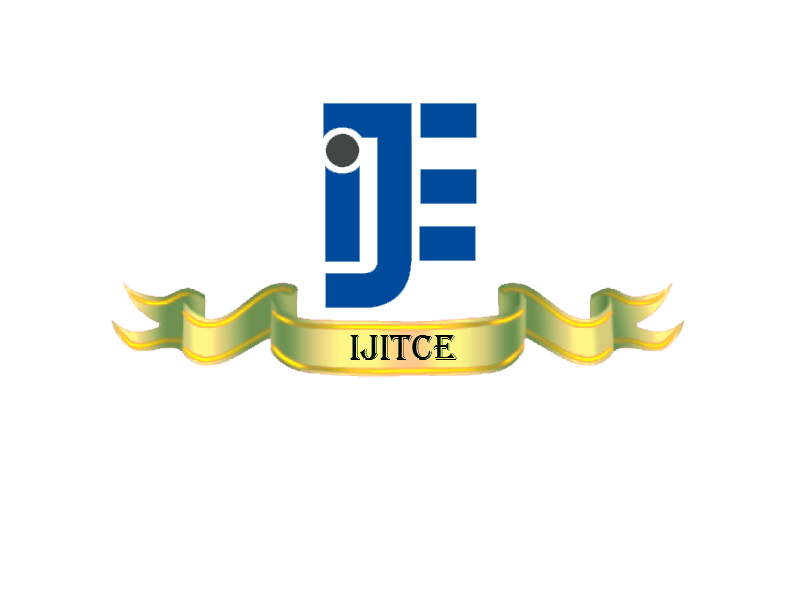November 2018 Issue Vol.8 No.11
Survey on Mobile Edge Computing Techniques
https://ia601506.us.archive.org/35/items/vol8no1101/vol8no1101.pdf
Mohanasathiya K.S
Ph.D Research Scholar (Part-Time),Department of Computer Science, Nandha Arts & Science College, Erode, Tamil Nadu, India
Dr.S.Prasath
Assistant Professor & Research Supervisor, Department of Computer Science, Nandha Arts & Science College, Erode, Tamil Nadu, India
Abstract:
Mobile Edge Computing (MEC) is an growing design where cloud computing services are extended to the edge of networks mobile base stations. The challenging edge technology are applied to mobile, wireless and wire line development using software and hardware platforms, located at the network edge in the vicinity of end-users. MEC present faultless combination of various application service supplier and hawker towards mobile subscribers. The important component in 5G architecture which supports variety of new applications and services where especially little latency is required. In this paper intended to current a broad analysis of related technical improvement in area of MEC. It provides the definition of MEC, architectures and application in particular highlighted and future directions. It concluded with security and privacy issues related to existing are discussed.
Keywords:MEC, IOT, Fog Computing, Cloud Computing.
Recognizing Face with Consecutive Occlusion Using Markov Chain
https://ia601503.us.archive.org/22/items/vol8no1102/vol8no1102.pdf
G.Rajeswari
Assistant Professor, Department of CSE, Sree Sowdambika College of Engineering, Aruppukottai, Tamil Nadu, India
Dr.P.Ithaya Rani
Associate Professor, Department of CSE,Sethu Institute of Technology, Kariapatti, Tamil Nadu, India
Abstract:
Face Recognition (FR) technology is software that can identify human face from any digital image/ video. In the real world, faces with occlusion such as sunglasses, scarf, mask etc., are quite common, especially in uncooperative scenario. The facial occlusion is one critical factor that affects the performance of face recognition. One cannot predict human face, when the face has been occluded. In recent years, Markov chain model a hotspot of dealing with face recognition under different illuminations and facial occlusions. The basic idea of Markov chain model is to recover clean images from degraded images or occluded images by using the clean training samples. Then the reconstructed images are used for face recognition. Note that the residual image which is a difference between the raw and reconstructed image containing most of the occluded information. In this paper two contributions are created for occlusion detection: i) a new occlusion detection method is presented by combining the information of both raw image and residual image; ii) the non-occluded part for face recognition has a better result than using reconstructed image is empirically displayed. The main objective of this paper is to get information about the error distribution in advance.
Keywords:Face recognition with occlusion, Markov Chain, residual image.
Read complete November2018
Read complete November2018
G.Rajeswari
Assistant Professor, Department of CSE, Sree Sowdambika College of Engineering, Aruppukottai, Tamil Nadu, India
Dr.P.Ithaya Rani
Associate Professor, Department of CSE,Sethu Institute of Technology, Kariapatti, Tamil Nadu, India
Abstract: Face Recognition (FR) technology is software that can identify human face from any digital image/ video. In the real world, faces with occlusion such as sunglasses, scarf, mask etc., are quite common, especially in uncooperative scenario. The facial occlusion is one critical factor that affects the performance of face recognition. One cannot predict human face, when the face has been occluded. In recent years, Markov chain model a hotspot of dealing with face recognition under different illuminations and facial occlusions. The basic idea of Markov chain model is to recover clean images from degraded images or occluded images by using the clean training samples. Then the reconstructed images are used for face recognition. Note that the residual image which is a difference between the raw and reconstructed image containing most of the occluded information. In this paper two contributions are created for occlusion detection: i) a new occlusion detection method is presented by combining the information of both raw image and residual image; ii) the non-occluded part for face recognition has a better result than using reconstructed image is empirically displayed. The main objective of this paper is to get information about the error distribution in advance.
Keywords:Face recognition with occlusion, Markov Chain, residual image.
